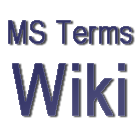Electrospray ionization: Difference between revisions
From Mass Spec Terms
(clean up using AWB) |
No edit summary |
||
| (6 intermediate revisions by the same user not shown) | |||
| Line 1: | Line 1: | ||
{{ | {{Final | ||
|acronym=, ESI | |||
|def=[[Spray ionization]] process in which either cations or anions in solution are transferred to the gas phase via formation and desolvation at atmospheric pressure of a stream of highly charged droplets that result from applying a potential difference between the tip of the [[electrospray needle]] containing the solution and a counter electrode. | |||
:Note: When a pressurized gas is used to aid in the formation of a stable spray, the term [[pneumatically assisted electrospray ionization]] is used. The term [[ionspray]] is deprecated unless describing the commercial product. | |||
|rel= | |||
|ref=J. B. Fenn, M. Mann, C. K. Meng, S. F. Wong, C. M. Whitehouse. Science 246, 64 (1989). (http://dx.doi.org/10.1126/science.2675315 ) | |||
M. Dole, L. L. Mack, R. L. Hines, R. C. Mobley, L. D. Ferguson, M. B. Alice. J. Chem. Phys. 49, 2240 (1968). (http://dx.doi.org/10.1063/1.1670391 ) | |||
{{psims|1000073}} | |||
}} | }} | ||
[[category:Spray ionization]] | |||
Latest revision as of 22:57, 12 March 2024
| IUPAC RECOMMENDATIONS 2013 |
| Electrospray ionization , ESI |
|---|
Spray ionization process in which either cations or anions in solution are transferred to the gas phase via formation and desolvation at atmospheric pressure of a stream of highly charged droplets that result from applying a potential difference between the tip of the electrospray needle containing the solution and a counter electrode.
|
| Related Term(s): |
| Reference(s):
J. B. Fenn, M. Mann, C. K. Meng, S. F. Wong, C. M. Whitehouse. Science 246, 64 (1989). (http://dx.doi.org/10.1126/science.2675315 ) M. Dole, L. L. Mack, R. L. Hines, R. C. Mobley, L. D. Ferguson, M. B. Alice. J. Chem. Phys. 49, 2240 (1968). (http://dx.doi.org/10.1063/1.1670391 )
|
| From Definitions of Terms Relating to Mass Spectrometry (IUPAC Recommendations 2013); DOI: 10.1351/PAC-REC-06-04-06 © IUPAC 2013. |
